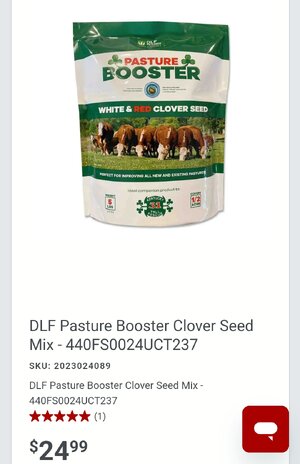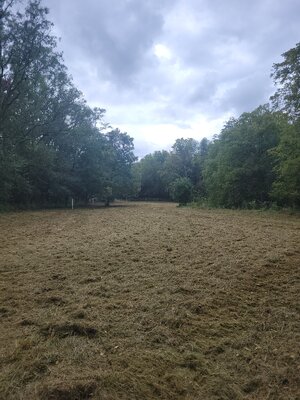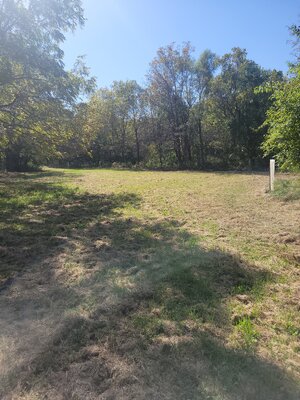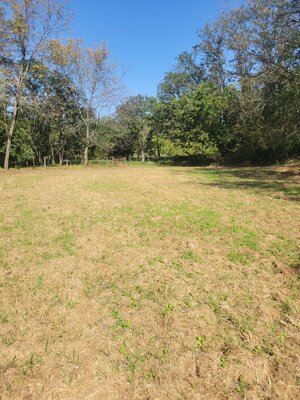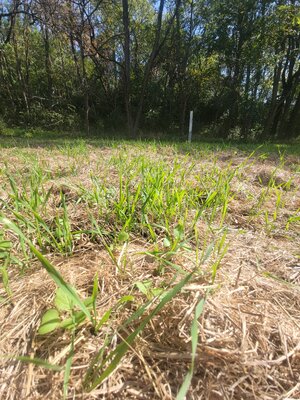I'm in central IL. Farmers almanac says first frost will be in about 30 days. I have a .5ac section of pasture that I'd like to turn into a food plot. I have never done a food plot before but I have a tractor, sprayer, and flail mower and my local seed supplier has winter wheat for $22/50lb. There's rain in the forecast this weekend (in 5 days). If I spray gly today, then broadcast and mow/roll before it rains, do I have any chance of success?
I like to say prior preparation prevents poor performance but I usually don't listen to my own advice.
I like to say prior preparation prevents poor performance but I usually don't listen to my own advice.


